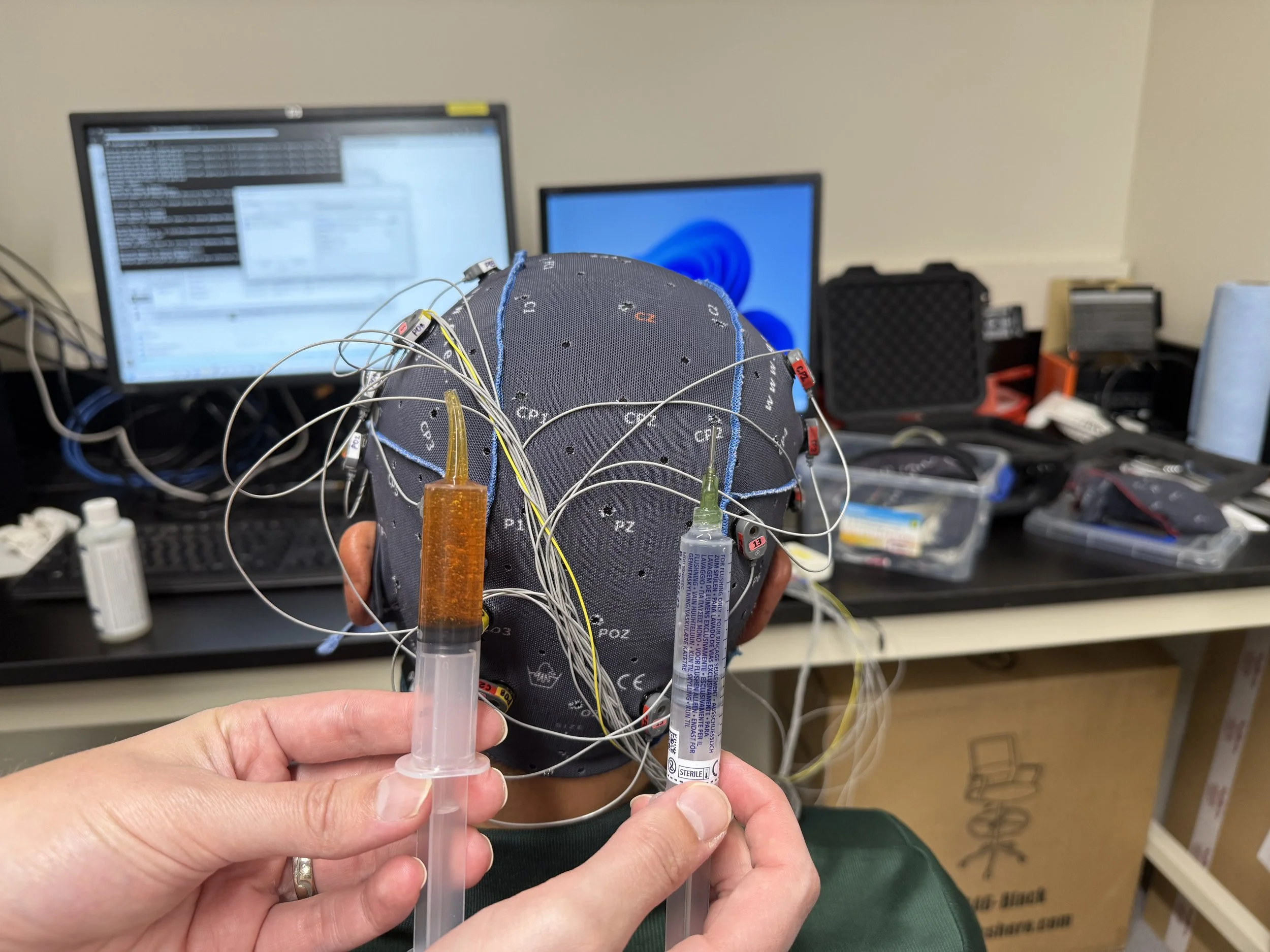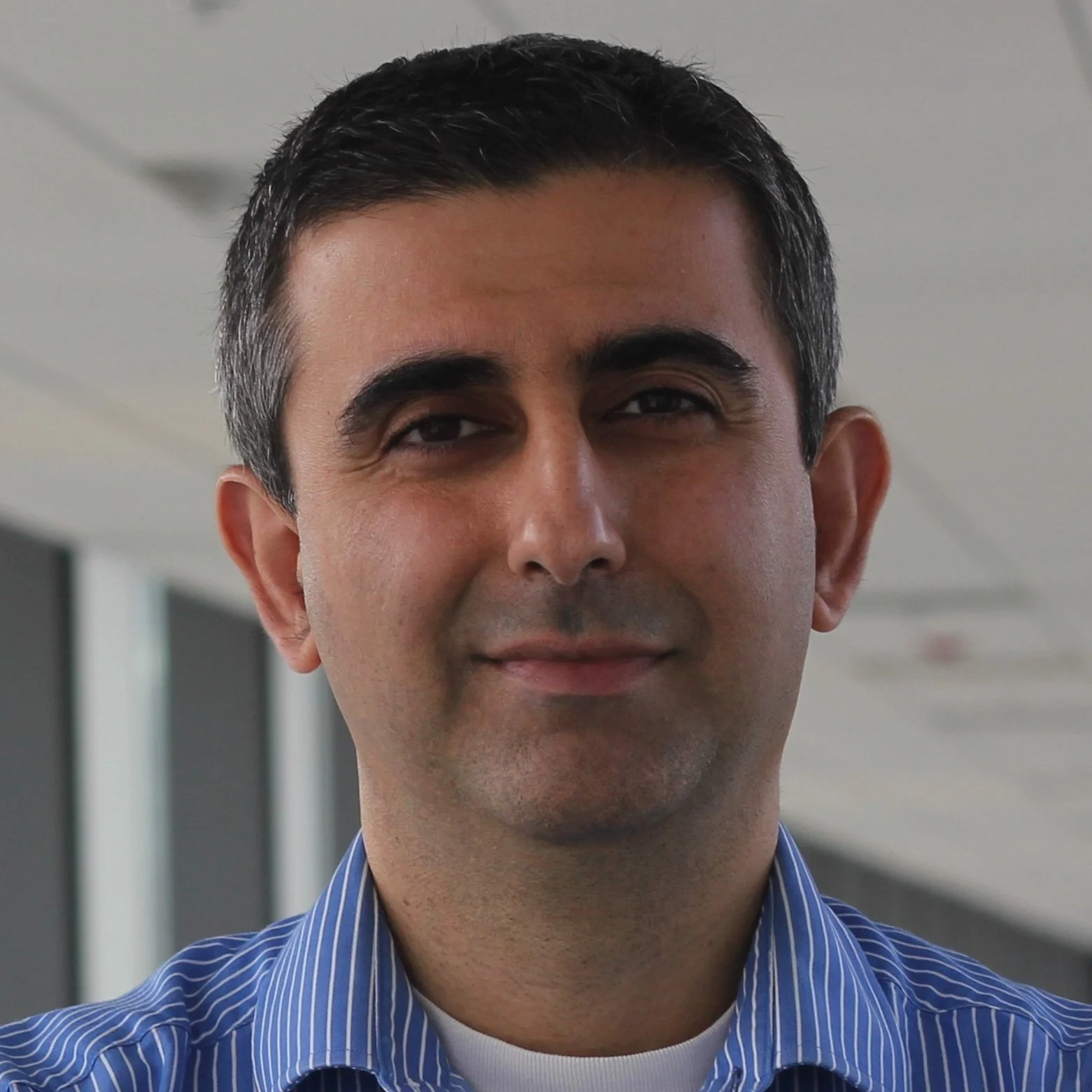round 02.
A-MEDICO funded projects: 2024
project 01.
Smart Gell for EEG
Themes: 01
Technologies: Point of care devices, materials.
Keywords: Materials, Disabilities, Electro-gel/Smart Gel, Children, Electroencephalogram (EEG), Brain Computer Interface (BCI)
Purpose: Our proposed solution aims to develop a new type of electro-gel that makes EEG headsets more practical for daily use through easier application and removal. We hope to simply the procedure and allow children to use BCIs more regularly and effectively.
Solution: EEG headsets need electrically conductive gels to obtain high quality signals. A smart gel that modulates its viscosity on demand so that it is easier to apply and remove. Brain computer interface (BCI) technology that will allow users to control devices directly with their brain signals.
Goal: By enhancing the accessibility and usability of BCIs, we are taking an important step toward empowering these children and improving their everyday lives.
-
Professor, Faculty of Engineering
-
Professor, Cumming School of Medicine
-
University of Calgary
project 02.
Smart Garment for Neurological Function Monitoring and Enhancement
Themes: 01, 02, 03
Technologies: Point of care devices, materials, data, robotics, manufacturing.
Keywords: Parkinson’s Disease (PD), Smart Garment, Sensors, Electrical Stimulation, Bio analytics, Diagnosis, Machine Learning
Purpose: •The current project will develop comfortable and wearable technology embedded into a garment to provide neurological function monitoring and enhancement to help in everyday function for individuals living with PD.
Solution: Electrodes as part of the garment will provide an electrical stimulus to combat tremors associated with PD. Sensors embedded into the smart garment will monitor the user’s evolving condition. Embedded biosensors will allow detecting changes in individuals with genetic linkages to the disorder for an early diagnosis.
Goal: To enable better information gathering and tremor prevention for PD patients and early diagnosis for individuals with a larger predisposition to neurological disorders.
-
Associate Professor, Cumming School of Medicine
-
Professor & Director, Medicine & Sensory Motor Adaptive Rehabilitation Technology (SMART) Network
-
Associate Professor, Faculty of Agricultural, Life & Environmental Sciences
-
Evidence Decision Support Program (EDSP) Provincial Program Lead, Surgical Innovation
-
Professor, Faculty of Engineering
-
Professor, Faculty of Arts & Science
-
Assistant Professor (Teaching), Community Health Sciences & Haskayne School of Business
project 03.
Monte Carlo-based verification of human model-based TPS in the Alberta linac-MR
Themes: 02, 04
Technologies: Imaging, data, modeling.
Keywords: Cancer, Magnetic Resonance Imaging (MRI), Monte Carlo (MC), Treatment Planning System (TPS)
Purpose: Onboard imaging is critical for a safe and accurate treatment as it informs patient positioning and is used to guide radiation when a tumour is in motion, such as in the lung or liver treatment sites.
Solution: The Alberta linac-MRI system will provide high-quality care to Alberta patients. We plan to ensure the accuracy and precision of dose calculations by comparing dose plans from the simpler, faster, model-based TPS with those from the MC-Based (gold standard) TOPAS system
Goal: The integration of MC simulations into the TPS process represents a critical step in verifying the treatment planning and delivery accuracy in our advanced cancer treatments for Alberta patients
-
University of Alberta
-
Professor, Faculty of Medicine & Dentistry
-
University of Alberta
-
University of Calgary
project 04.
Enhancing elite sledge hockey player through equipment matching based on quantitative functional assessment
Themes: 01, 02, 03, 04
Technologies: Data, modeling, manufacturing.
Keywords: Sledge Hockey, sensors, athletes.
Purpose: Fuses the expertise of two Alberta research groups to bring a more rigorous approach to performance optimization for Canada’s sledge hockey team.
Solution: Sagitta so that it can be mounted unobtrusively on a hockey sledge and collect inertial data during sledge hockey performance. Sensors placed on the arms of the hockey player, fuse data from the sledge and human motion to inform improvements in sledge design and athlete technique.
Goal: This project will contribute to advancing the sport of sledge hockey by helping with training, performance assessment and equipment design.
-
Professor, Faculty of Rehabilitation Medicine
-
Associate Vice President, Applied Research
-
Red Deer Polytechnic
-
University of Alberta
project 05.
Materials, Adhesives, and Form Factors for Wearable Sensors to Detect Stroke-Inflicted Paralysis Real-time
Themes: 01
Keywords: Stroke, wearables, sensors, rural, monitoring.
Technologies: Point of care devices, materials, manufacturing.
Purpose: There is currently no solution that continuously monitors people for early signs of a stroke, leaving many at risk, especially those in rural and underserved communities.
Solution: Stroke.ai is developing a wearable sensor that monitors body movement in real time and uses advanced technology to detect early signs of stroke. The data is analyzed instantly through a secure cloud platform, alerting healthcare providers if potential problems arise.
Goal: To create impactful changes that guarantee timely and accurate monitoring for all patients, regardless of location or available resources. By alleviating the burden on healthcare providers and improving patient care, Stroke.ai can significantly reduce the long-term impact of stroke on both individuals and society.
-
University of Calgary
-
Professor, Faculty of Engineering
-
Professor, Cumming School of Medicine
-
University of Calgary
-
Associate Vice President, Applied Research
project 06.
Developing Point-of-Care Devices for Rapid and accurate Differentiating Acute Viral and Bacterial Infections
Themes: 01
Technologies: Point of care devices, materials, data, manufacturing.
Keywords: Biosensor, Point of Care (POC), Stress conditions.
Purpose: This grant proposal addresses the challenge of biosensor instability at ambient temperatures, which limits the use of point-of-care (POC) devices in remote and rural settings due to the degradation of immobilized biosensing reagents.
•Solution: The methods under investigation include sucrose salt stabilization, metal-organic framework coatings (e.g., ZIF-8), and crosslinking using NHS/EDC chemistry. The study will assess the performance of these modified biosensors through electrochemical sensing and stability tests under stress conditions.
Goal: To identify the most effective method for enhancing biosensor durability, with the revisited ViroSense platform being tested in a pre-clinical study for respiratory virus detection.
-
Associate Professor, Faculty of Science University of Calgary
-
Associate Vice President, Applied Research
-
Professor, Schulich School of Engineering
-
Professor, Faculty of Engineering
-
Professor, Schulich School of Engineering
project 07.
AI-Assisted Clinical Support Systems for Patient-Specific Pediatric Healthcare
Themes: 02, 04
Technologies: Data, modeling, robotics, manufacturing.
Keywords: Phototherapy, wound healing, smart bandage, Light emitting devices
Purpose: While there have been previous efforts in integrating AI solutions for patient-specific healthcare, there are intricate challenges when it comes to deploying AI solutions for pediatric healthcare
Solution: ML models for variety of pediatric interactions within the pediatric acute care setting. This will allow for effective triaging of patients at risk thereby reducing patient wait times.
Goal: Our goal is to use data (e.g. vitals, body temperature, weight, height, pulse oximetry, etc). collected during the initial emergency checkup to identify at risk children immediately and aid in the decision making of triaging. We also aim to characterize model explainability using methods such as Shapley Additive Explanation to ensure their clinical relevance.
-
Assistant Professor, Faculty of Science
-
Professor, Faculty of Science
-
Evidence Decision Support Program (EDSP) Provincial Program Lead, Surgical Innovation
-
University of Calgary
-
University of Alberta
project 08.
Intelligent Workstation for Robot-Assisted Surgery: An IoT-OR Paradigm - A-MEDICO Project focus: Multi-nodal Data Architecture & Multi-modal Sensors & Information
Themes: 04
Technologies: Point of care devices, data, modeling, robotics, manufacturing.
Keywords: Intelligent Workstation, Robot-assisted tele-surgery , AI, IoT-OR, cloud computing, real-time guidance and feedback
Purpose: Building upon 3 past Calgary-led innovation, the intra-operative MRI system, the world’s first MRI compatible robot for brain surgery neuroArm, and establishment of the IoT-OR (internet of things-operating room) using SmartForceps System, the project will realize the completion of next-gen microsurgery-specific telerobotic system here in Alberta.
Solution:
Full system design, build, assembly & end-to-end smart system (hardware/software/electronics/custom AI/cloud computing)
Modern data architecture (graph database)
Smart user interface, with real-time guidance and feedback
Novel Interconnected digital platform - IoT-OR
•Goal: A fundamental motivation to this vision is using sensors, AI and digital innovation in improving safety of surgery and making complex surgical event, uniform and predictable for every patient.
-
Professor, Faculty of Engineering
-
Professor, Cumming School of Medicine
-
Evidence Decision Support Program (EDSP) Provincial Program Lead, Surgical Innovation
-
Associate Vice President, Applied Research
project 09.
Enhancing mobility and independence through intelligent assistive devices
Themes: 03
Technologies: Point of care devices, data, modeling, robotics, manufacturing.
Keywords: Robotics, Disabilities, Older Adults, Large Language Models, Intelligent devices, Brain Computer Interface
Purpose: Through Intelligent Assistive Devices, aims to develop cutting-edge assistive technologies that will significantly improve the lives of those with disabilities, particularly older adults and people with severe physical challenges.
Solution: AI systems to interpret spoken commands, understand user intent through gestures and other non-verbal signals, and provide real-time feedback to the user. Brain computer interface (BCI) technology that will allow users to control devices directly with their brain signals.
Goal: To enable greater independence for individuals with disabilities, helping them lead more fulfilling lives through the power of intelligent devices.
-
University of Alberta
-
Professor, Faculty of Arts & Science
-
Professor, Faculty of Engineering
-
Assistant Professor, Mechanical Engineering
-
Professor & Director, Medicine & Sensory Motor Adaptive Rehabilitation Technology (SMART) Network
-
Professor, Faculty of Engineering
-
Professor, Faculty of Engineering
-
University of Calgary
-
Professor, Cumming School of Medicine
project 10.
Non-invasive evaluation of osseointegration
Themes: 01, 02, 03, 04
Technologies: Imaging, data, modeling, robotics, manufacturing.
Keywords: Assistive devices, bone-anchored, implant, stiffness.
Purpose: To seek to enable meaningful implant stability assessment and monitoring for patients with bone-anchored prostheses anywhere in Alberta.
Solution: Advanced System for Implant Stability Testing (ASIST). Handheld impactor which taps gently on the external portion of the implant, allowing vibration signals which correspond with bone-implant interface stiffness to be measured with an accelerometer. Software then makes use of a model of the implant to directly estimate the stiffness of the bone-implant interface.
Goal: To allow scientific and healthcare communities to better understand the process of bone-implant integration, leading to improved efficiency and efficacy of healthcare interventions.
-
Assistant Professor, Faculty of Engineering
-
Associate Vice President, Applied Research
-
Professor, Cumming School of Medicine & Schulich School of Engineering



































